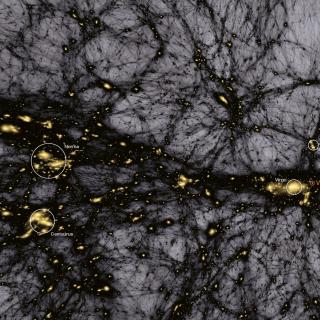Bibcode
Wang, Bao; López-Corredoira, Martín; Wei, Jun-Jie
Bibliographical reference
Monthly Notices of the Royal Astronomical Society
Advertised on:
1
2024
Citations
7
Refereed citations
6
Description
In order to investigate the potential Hubble tension, we compile a catalogue of 216 measurements of the Hubble-Lemaître constant H0 between 2012 and 2022, which includes 109 model-independent measurements and 107 ΛCDM model-based measurements. Statistical analyses of these measurements show that the deviations of the results with respect to the average H0 are far larger than expected from their error bars if they follow a Gaussian distribution. We find that xσ deviation is indeed equivalent in a Gaussian distribution to xeqσ deviation in the frequency of values, where xeq = 0.72x0.88. Hence, a tension of 5σ, estimated between the Cepheid-calibrated type Ia supernovae and cosmic microwave background (CMB) data, is indeed a 3σ tension in equivalent terms of a Gaussian distribution of frequencies. However, this recalibration should be independent of the data whose tension we want to test. If we adopt the previous analysis of data of 1976-2019, the equivalent tension is reduced to 2.25σ. Covariance terms due to correlations of measurements do not significantly change the results. None the less, the separation of the data into two blocks with H0 < 71 and H0 ≥ 71 km s-1 Mpc-1 finds compatibility with a Gaussian distribution for each of them without removing any outlier. These statistical results indicate that the underestimation of error bars for H0 remain prevalent over the past decade, dominated by systematic errors in the methodologies of CMB and local distance ladder analyses.
Related projects

Cosmology with Large Scale Structure Probes
The Cosmic Microwave Background (CMB) contains the statistical information about the early seeds of the structure formation in our Universe. Its natural counterpart in the local universe is the distribution of galaxies that arises as a result of gravitational growth of those primordial and small density fluctuations. The characterization of the
FRANCISCO SHU
KITAURA JOYANES